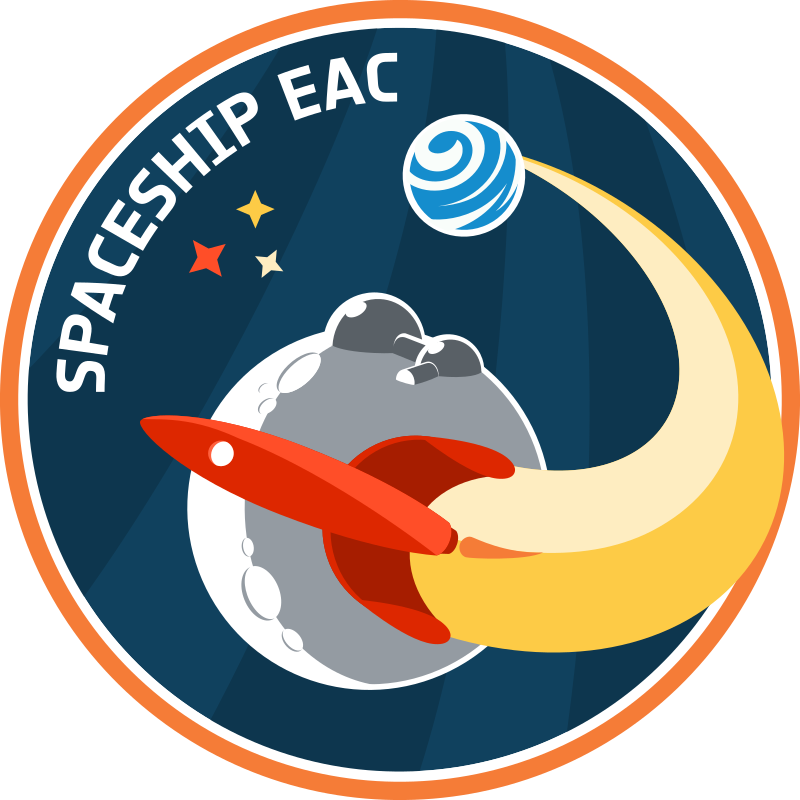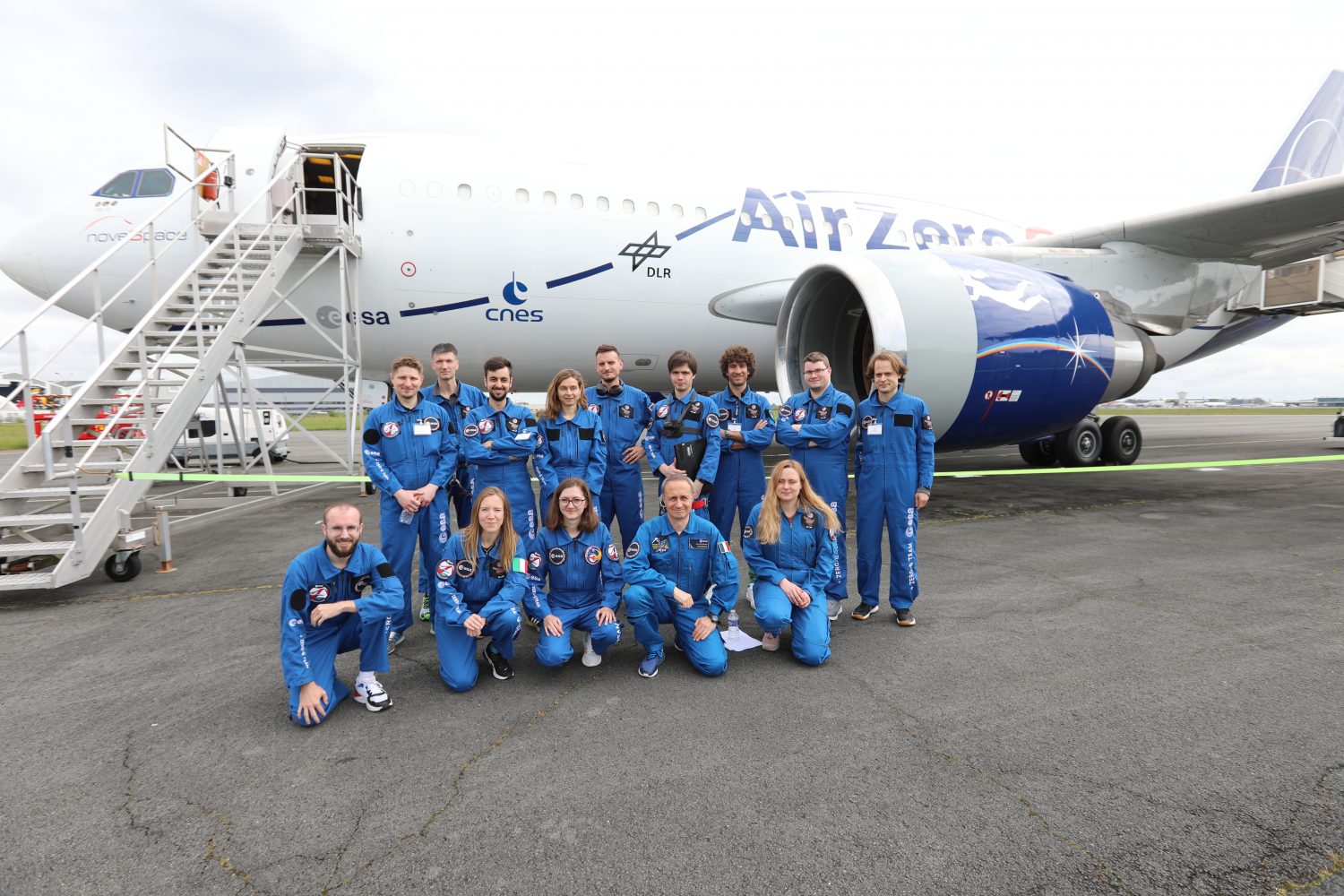ESA offers parabolic flights to researchers to conduct experiments in reduced gravity. Most parabolic flights are performed to achieve zero gravity for up to 22 seconds of weightlessness for each parabola. In partial-gravity flights, the pilots recreate Moon or Mars gravity levels by adapting the parabolas to last a little longer.
During the flight, experiments can be conducted in a variety of disciplines such as human physiology, biology, fluid physics, as well as using the altered gravity time to demonstrate technology. Parabolic flights are an opportunity for researchers to prepare and train for future space missions, and for students to gain hands-on experience in space research.
This April, ESA, along with the French space agency CNES and German Aerospace Centre DLR, sponsored a parabolic flight campaign using Mérignac-Bordeaux airport in France as base.
The campaign consisted of three flights of 31 parabolas each, in lunar and martian gravity. The gravity felt during the 93 parabolas was reduced to either one-sixth (to simulate lunar gravity) or one-third (for martian gravity) of that of Earth. Several teams from ESA’s European Astronaut Centre (EAC) were on board to put their applications through the lunar stress test:
Lunar moving
The Lunar Equipment Support Assembly (LESA) investigation tested three transport carrier prototypes on wheels that could assist Artemis astronauts during moonwalks. Designed to transport equipment and tools, the carriers were evaluated for mobility on a four-meter path in the aircraft.
The three versions tested included:
- LESA designed for the recovery and transport of injured astronauts,
- LESA-NEST (Near-by Equipment Support Trolley), designed for the transport of tools and equipment,
- a combined LESA Lunar Equipment Support Assembly/Lunar Evacuation System Assembly prototype (contracted to COMEX) designed for tool transport, crew rescue, and payload transport.
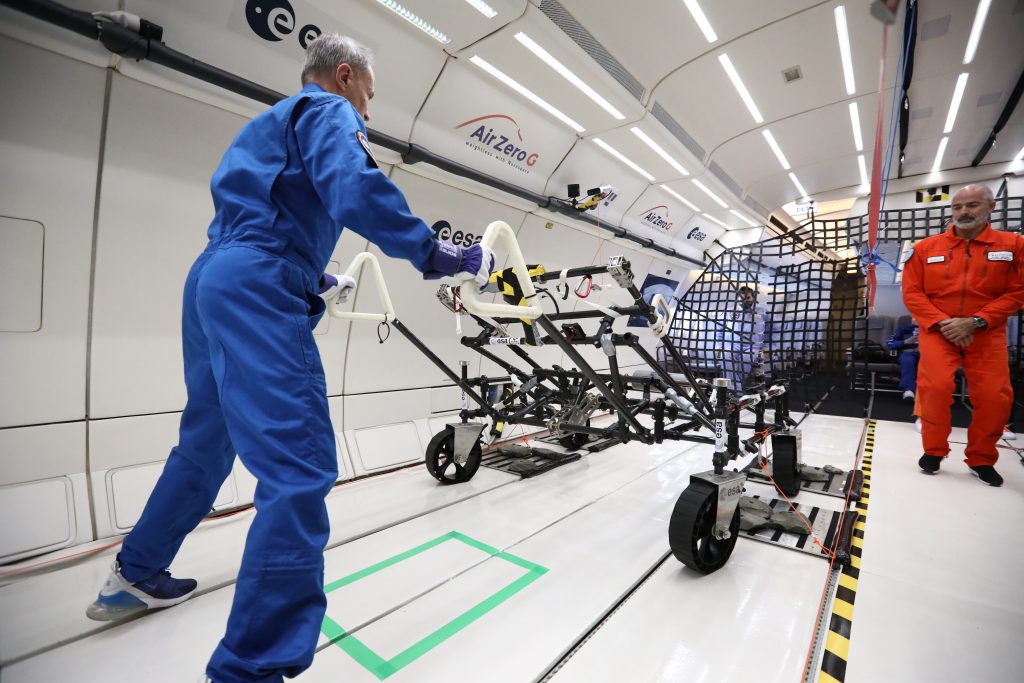
Testing the Lunar Equipment Support Assembly (LESA) investigation. Credits: ESA/Novespace
Filters for the Moon
The Lunar Facility Filtration Assessment (LuFFa) is evaluating a novel 3D printed polylactic acid (PLA) filter for air filtration systems on the Moon. Lunar regolith, the layer of dust and rock fragments covering the Moon’s surface, is abrasive and can damage equipment and spacesuits. To increase efficiency and protect the main filters of the air filtration system, the experiment assessed how a pre-filter’s dust and pressure changes under lunar gravity and evaluate its efficiency. The experiment was conducted using a fan and dust chamber. The research will allow a better understanding of lunar gravity’s effects on air filters and provide a new, simplified, and recyclable way of producing air filters in space and industry.
For Alexandra Adiaconitei, Spaceship EAC Young Graduate Trainee at ESA, the parabolic flight was an incredible experience, “Beyond excitement and hard work, the parabolic flight campaign was a profound learning experience. I conducted our experiment in lunar gravity, testing newly-developed filters designed for Moon habitats. The insights from this experiment will undoubtedly contribute to scientific advancements and continuous progress of space exploration”.
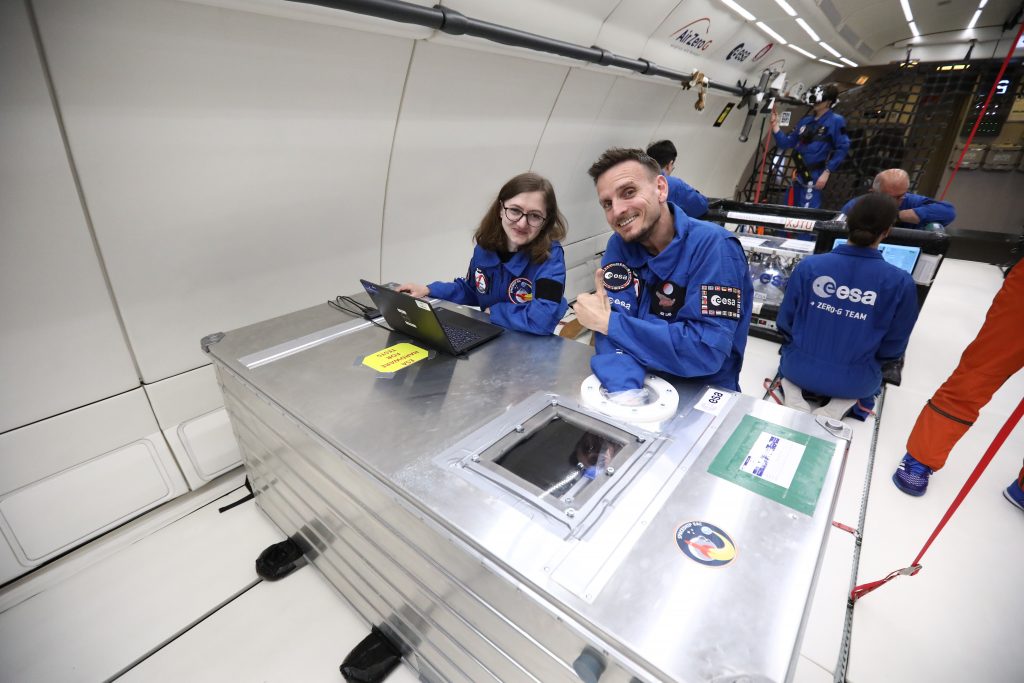
The Lunar Facility Filtration Assessment (LuFFa). Credits: ESA/Novespace
Argonaut
This investigation is looking at how reduced gravity on the Moon impacts user’s interaction with a virtual version of the Argonaut lunar lander. By using a headset and laptop, researchers simulated various lunar surface scenarios including cargo unloading procedures. The performance and usability of the simulation was measured and compared to its use in regular 1 g conditions on Earth. The goal is to improve the accuracy of virtual reality simulations used for training and preparing astronauts for lunar exploration.
“By deploying and testing our VR simulation under lunar gravity conditions, we have gathered valuable data that will help us enhance the realism of VR simulations conducted in standard laboratory settings. Our aim is to leverage these findings to enable a more extensive use of VR in forthcoming projects. This could not only help streamline the development process of the Argonaut lunar lander but also benefit any other design reviews and preparatory activities aimed at facilitating a human return to the Moon,” explains ESA research fellow Tommy Nilsson.
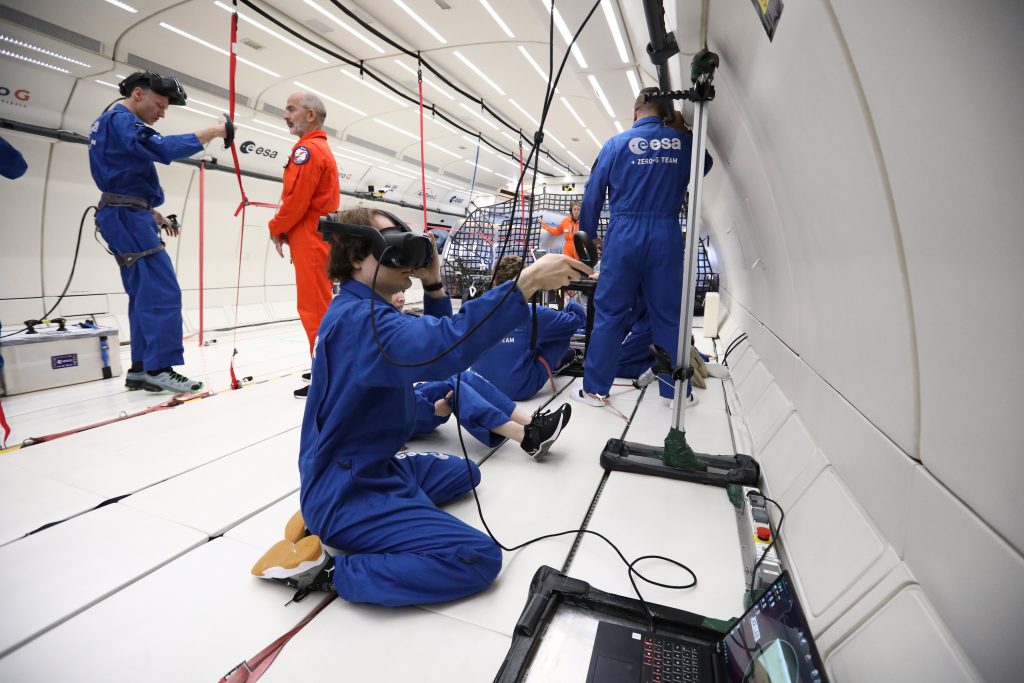
Testing the VR simulation of the Argonaut lander under lunar gravity conditions. Credits: ESA/Novespace
Virtual reality in real zero-gravity
The scientific objective of the experiment is to test the Gravity-Independent Virtual Reality (GIVR) system, which is designed to track the user’s motions in space. The experiment was conducted under 0 g, partial gravity, and hyper gravity, and confirmed that this new VR tracking method works as planned. The system consists of a custom-made VR headset with visual markers and cameras. The goal was to measure the correlation between the variations in gravity levels and the performance of the tracking system, and none was observed. The research will allow the use of VR systems in space for immersive operational human-machine interfaces, training, reviewing a spacewalk plan, and videoconferencing.
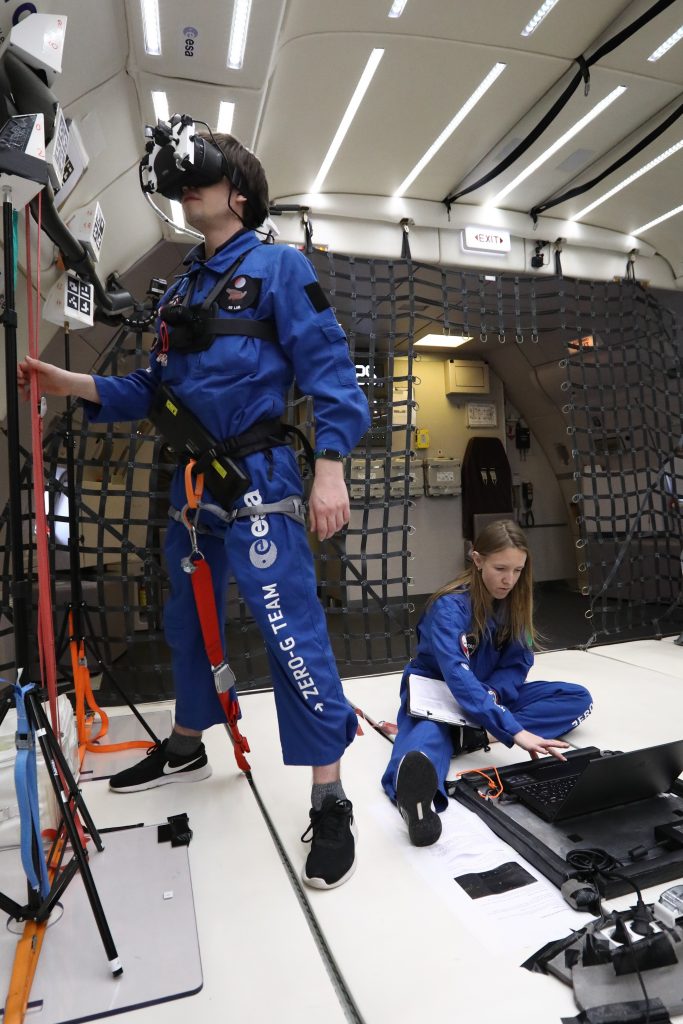
Testing the Gravity-Independent Virtual Reality (GIVR) system. Credits: ESA/Novespace
Finding the echo
The EchoFinder is an autonomous ultrasound acquisition protocol developed for spaceflight applications. The experiment is run by CNES and support by ESA. It uses augmented reality and organ detection algorithms to guide novice ultrasound operators to get useful images. This technology allows for reliable medical monitoring of astronauts during long-distance space travel, without the need for immediate communication with Earth. Its small size and minimal requirements make it suitable for missions with limited resources, like in the Orion spacecraft or lunar Gateway. The potential applications of this technology could extend beyond space travel to isolated areas and places with sparse medical facilities.
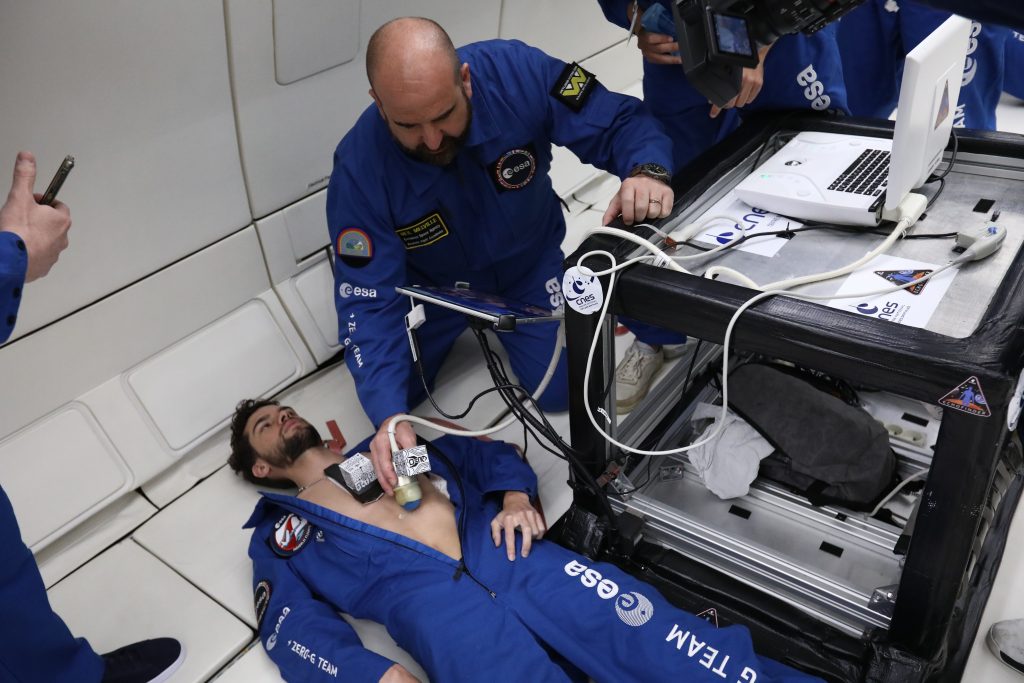
EchoFinder experiment. Credits: ESA/CNES/Novespace
After their over-the-Moon experience in the parabolic flight, the scientists are diving into the data collected to investigate. The teams were happy for the opportunity to participate in the flight, providing them a valuable environment for advancing their research and the future of space exploration.


